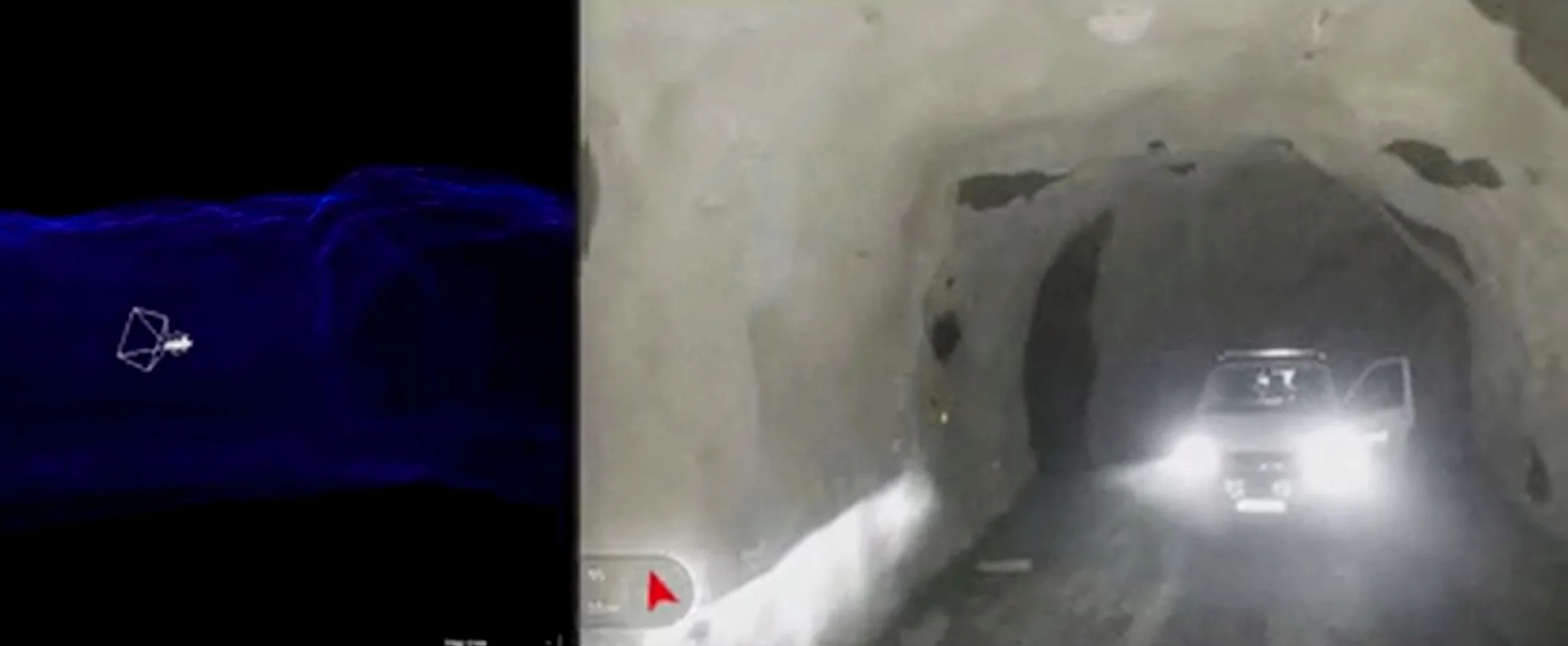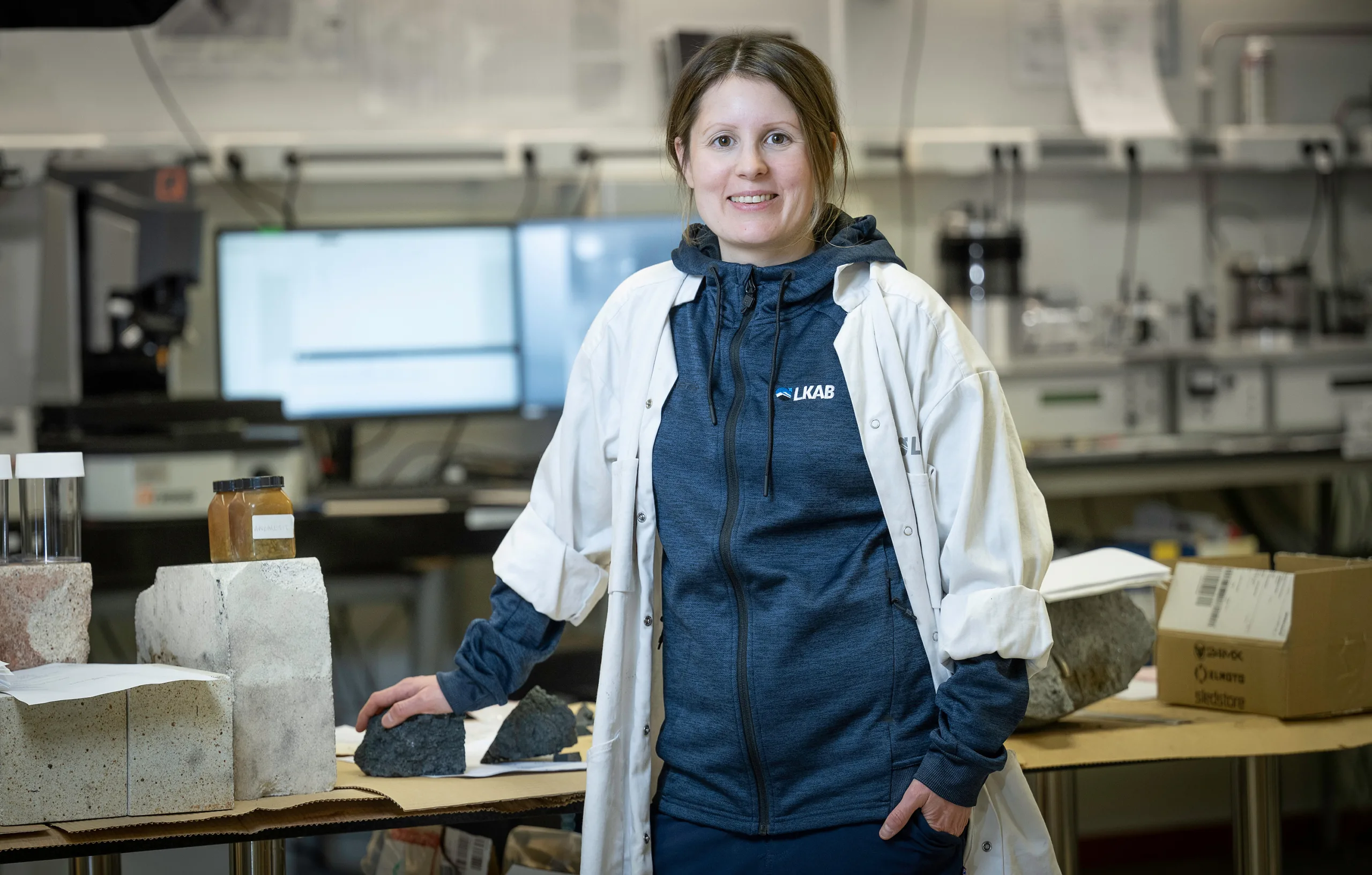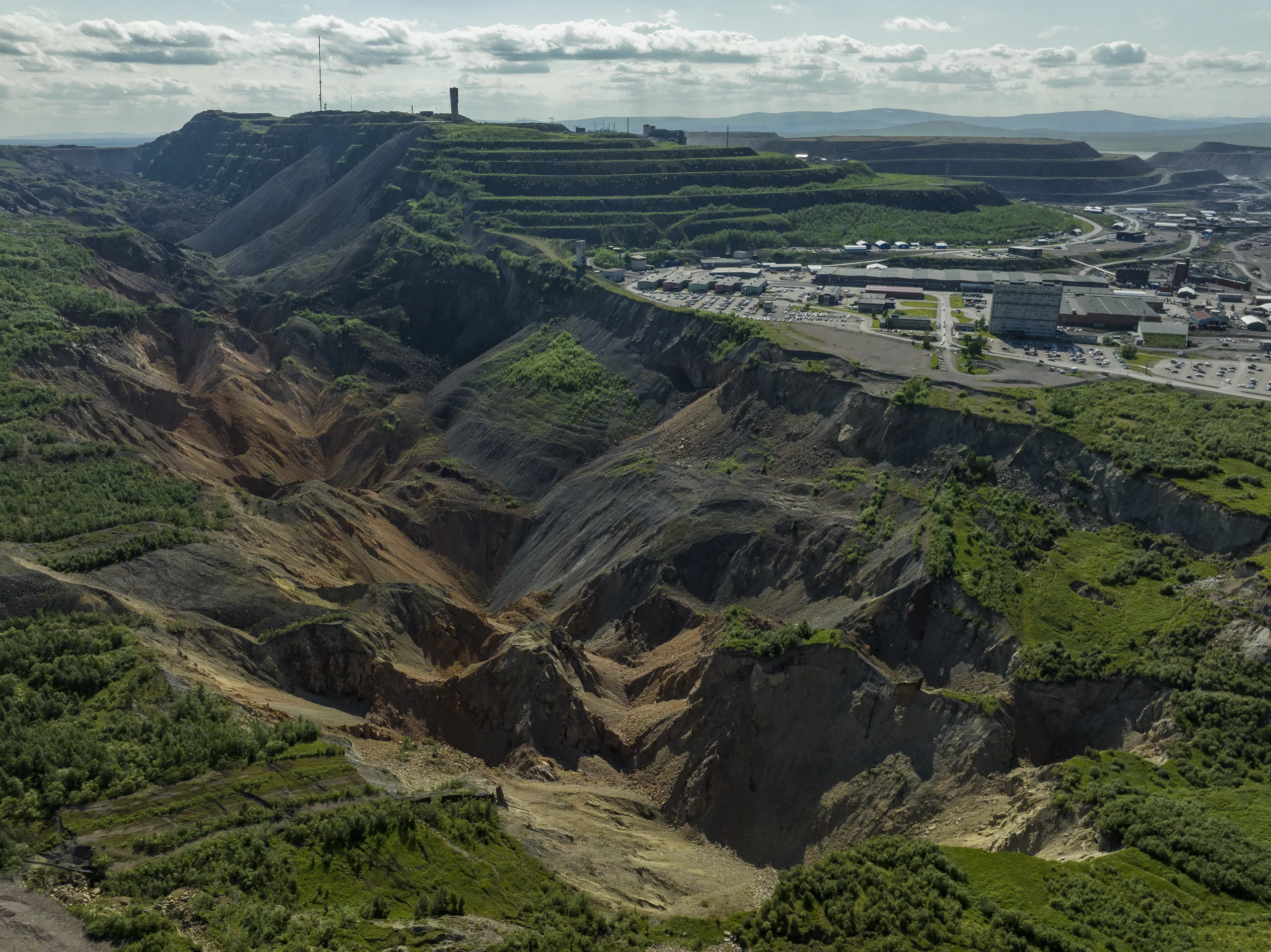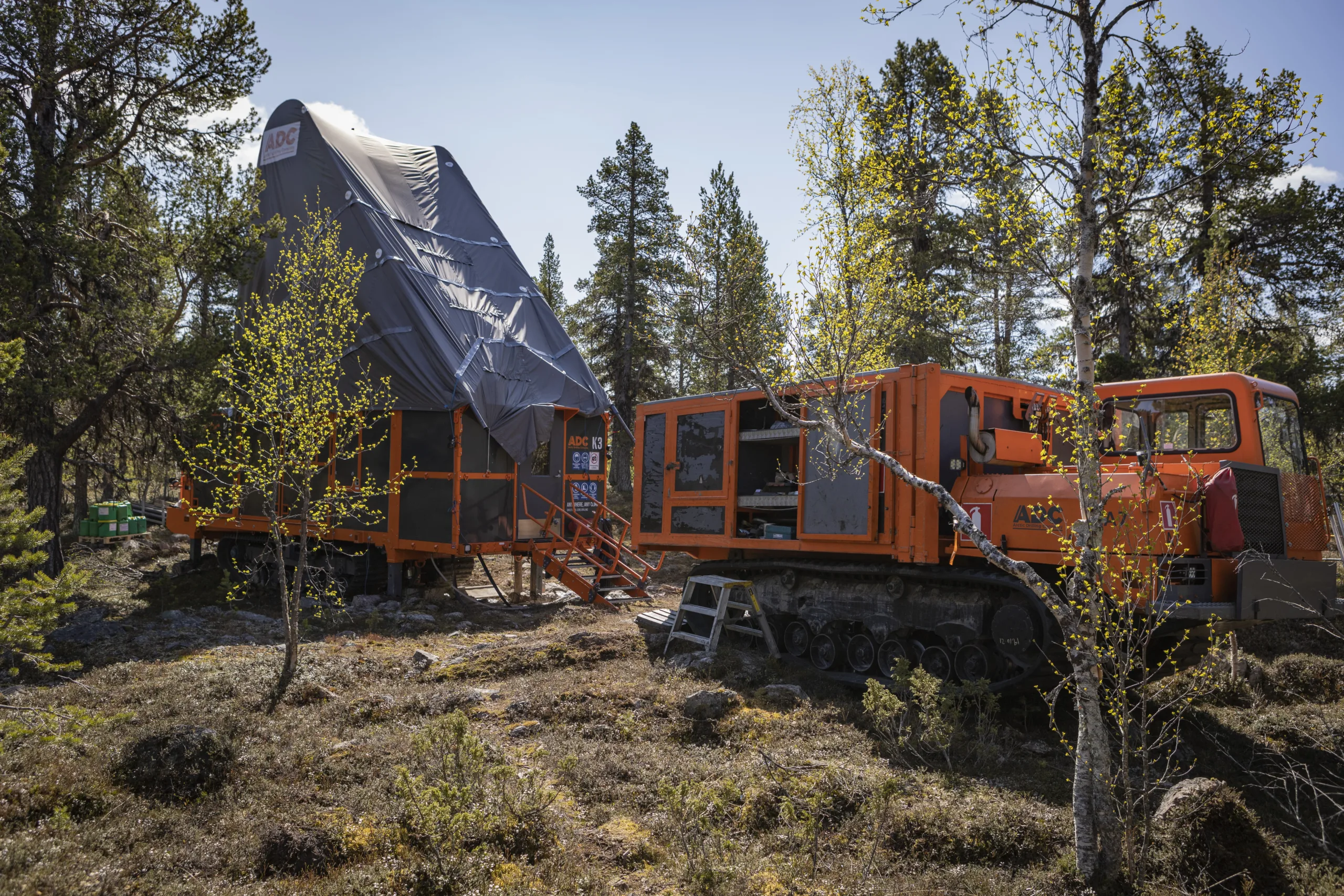More underground flights for a safer mine
Drones are being utilised to an even greater extent in the mine. There are numerous advantages and the benefits are significant. "This is an effective way to work. It's sustainable and safe," says Mikael Kyrö, production manager for the shaft renovation group in the Kiruna mine.
Ever since the major seismic event that occurred in the Kiruna mine, in May 2020, drone flights have become more frequent and more advanced. It is an effective tool, but it is above all a safe means of scanning an area and surveying the status, thereby enabling assessment of rock mechanics or planning rock-reinforcement measures. The technology has developed rapidly and drones are now used for a number of different tasks; however, the outcome is always the same – efficiency and safety under ground.
“This technology has enormous potential. Anywhere scaffolding would normally be used for inspection, a drone can be used instead. It saves a lot of time,” says Daniel Jatko, who works as a technician in the Kiruna mine.
The automation group flies drones on an almost daily basis and neither the frequency nor the extent of the missions is diminishing. On the contrary. Tasked by, among others, the shaft renovation group, Daniel Jatko and Anders Gidemalm, mine technicians, fly drones to gather valuable data that will aid ongoing renovation work. Primarily, it has to do with scanning the area, so as to successively complete a puzzle-picture of the entire infrastructure. This makes it possible to identify changes with a level of precision that was previously unheard of. In addition, exposure to potential hazards is reduced, while images are captured in ever greater detail, since the drone is able to enter confined and difficult-to-access areas. In other words, the drone becomes an extended arm, or an extra pair of eyes underground.
“We use a protective cage around one of the drones, which flies100 metres up in the shaft, and then returns. Without this technology we would never have had access to this kind of information. This means that we can plan shaft renovations much more effectively,” adds Mikael Kyrö.
During the brief period between departure and landing the drone registers a picture of the area that is incredibly accurate. This makes volume estimates for concrete used in the shaft more precise and thereby more cost-effective.
“Since we have this know-how and can do the surveys ourselves, the need for external services is significantly reduced. That means big cost savings,” says Mikael Kyrö.
The automation group also flies above ground. For example, the rotary kiln in one of the pellet plants has been inspected with the aid of one of the group’s drones.
“We inspected the refractory wear and were able to do the job in 30 minutes. This usually takes much longer,” explains Daniel Jatko.
The majority of flying hours are scheduled for underground work and in the shafts, for example, the ore passes, which are inspected and renovated on an ongoing basis.
“By flying the drones we are able to place a more exact order for the necessary renovation work. Sometimes, in fact, this also tells us that everything is in good condition and no renovation is needed,” says Anders Gidemalm.
And for maintaining the ore passes, the drones have been particularly useful. Previously, the camera equipment was sent down into the passes on a relatively large and unwieldy rig. This was a time-consuming operation. These surveys delivered results that were far less accurate than what can now be achieved with drones and ancillary equipment.
“Following the seismic event, development has progressed rapidly. We see more potential and possibilities for development,” says Anders Gidemalm.
It takes a lot of finesse to fly in shafts and become a good pilot. Practise makes perfect, as the saying goes, and the more the flying hours, the greater the proficiency; but ultimately, to be a skilled pilot, something more is required. Since the autopilot stops the drone when it encounters an obstacle or when too much dust is generated by the propellers and motors, the ability of the pilot is really put to the test.
“By flying manually, we can reach further into the hard-to-get-at places and get a better look. We can see things we have never been able to see before,” says Anders Gidemalm.
Another very important task for the drones is to locate blockages that stop the flow of material in the shafts.
“This means that we can use the best approach to eliminate the problem, for example, with water. It makes a big difference to our work if we know exactly where to go in and which method should be applied,” explains Mikael Kyrö.
Quite simply, the drones are here to stay and the technological development is still in its infancy.
“Things are happening all the time. One of our robot dogs, Speja, has been sent to level 1194 in the mine by the rock engineers to monitor changes in the condition of the rock,” concludes Mikael Kyrö.
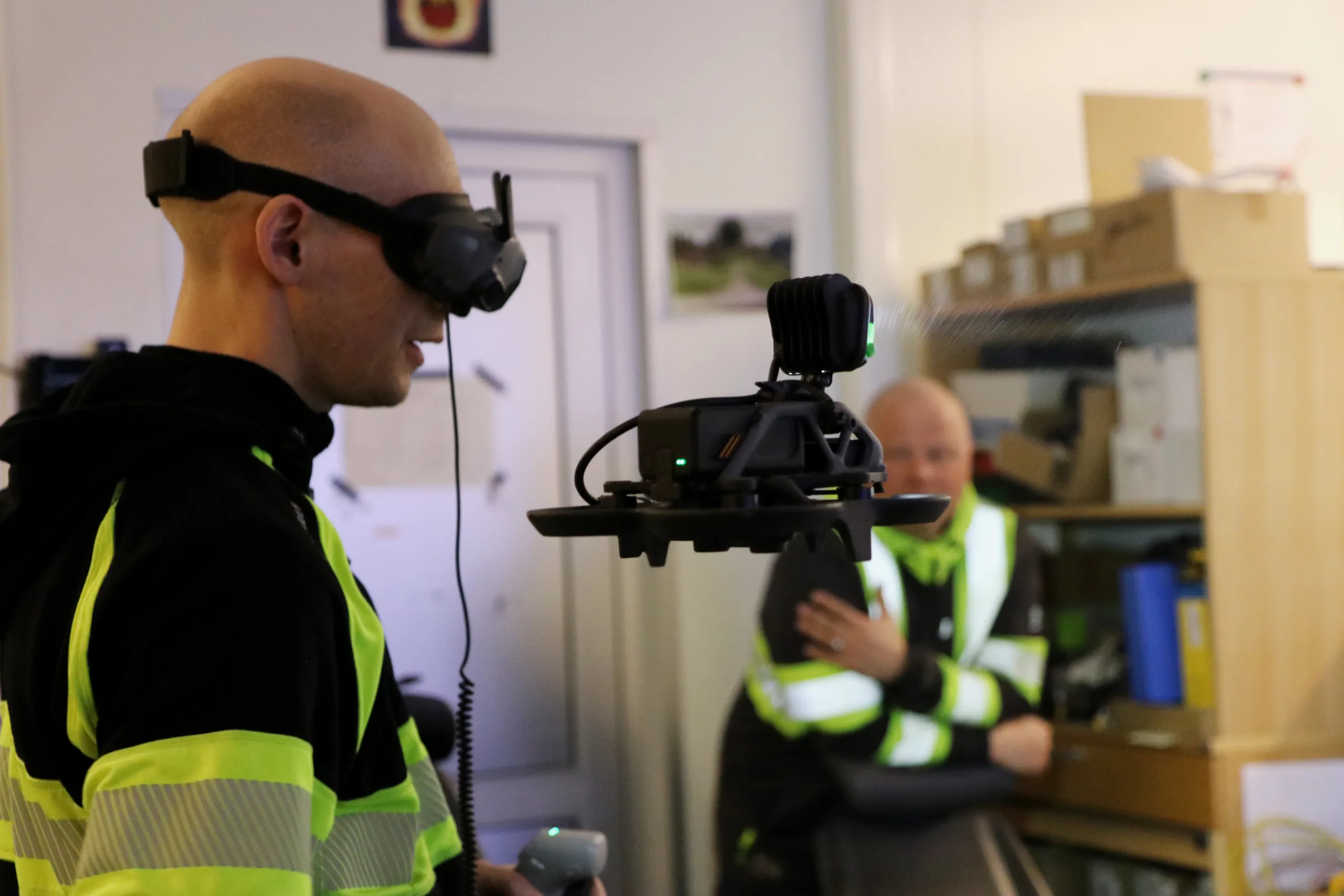
Image and text: Josefine Ejemalm

